Child soldiers. Young workers war
Children in the wars of the Black Continent
The greatest number of children and adolescents today are forced to fight with arms in their hands in numerous armed conflicts, rocking the African continent. Tropical Africa remains the least stable region of the planet, and it is here that the phenomenon of “child soldiers” has become most prevalent. 5 May 2015, during a forum on national reconciliation, held in the capital of the Central African Republic, Bangui, it was decided to demobilize underage soldiers from armed units of the fighting rebel groups, and release the children and adolescents in the groups who are used as cooks, servants and sexual servants. According to the representative of the United Nations Children's Fund, in the Central African Republic, there are from 6 to 10 thousands of children in the Central African Republic. All of them, if they take for granted the statement of the field commanders, will return home. However, child soldiers are not only used in the Central African Republic. Practically in all countries of Tropical Africa, where for years, and even decades, armed conflicts last, as a rule on ethnic grounds, children are also involved in the confrontation of rebel groups as soldiers or servants.
In 2012, UNICEF expressed concern about the use of child soldiers by rival groups fighting in Mali. According to the United Nations, representatives of the Tuareg rebel groups are most actively attracted to participate in hostilities. Hundreds of boys between the ages of 12 and 18 have fought in their ranks. The negative reaction of the UN is also caused by the active use of underage soldiers by the government forces of neighboring Chad. After 2005 intensified the armed confrontation of the Chadian army and rebel groups linked to neighboring Sudan, they began to call on children in the Chadian army, who are used not only as cooks and servants, but also for guard and patrol service, for service in the infantry and reconnaissance units of the Chadian army. Despite the fact that the Chadian government in 2013 promised to cooperate with UNICEF in the fight for the rights of children, in reality only a very small proportion of young Chadians were demobilized from military service after the protests of the world community.
According to researchers, almost every tenth child in the countries of Central and West Africa participates in hostilities on the side of a rebel army or gangster group. Child soldiers fight in Liberia and Sierra Leone, Congo and Uganda, Burundi and the Central African Republic, Somalia and Kenya. In the Democratic Republic of the Congo, up to 30 thousands of rebel fighters are children and teenagers. Minor soldiers make up the bulk of rebel fighters in Uganda and Liberia. The very possibility of using child soldiers in African countries is associated with a specific attitude to childhood and, especially, to adolescence. They grow up here disproportionately earlier than in Europe, the United States or Russia, but life expectancy is much less on average - in some African countries it does not even reach forty years. Until recently, adolescence as such was absent in African cultures. After the initiation rite, the child became an adult with all the ensuing consequences, including the adoption of a number of soldiers. Another thing is that many rebel groups fighting in African countries attract as children soldiers who, even by local standards, have not reached the age of use as soldiers. In Uganda or Sierra Leone, decadal and even eight-year-old soldiers are not uncommon. The main thing is that a soldier could raise a Kalashnikov assault rifle, as rebel commanders believe, forcibly recruiting children in villages into combat units and service personnel.
Ideas for the use of children and adolescents as soldiers were first tested in the Congo. Here in the first half of the 1960's. unfolded armed confrontation of various political groups. The theory of the rebel war in the Congo was developed by Pierre Mulele. Sympathetic to Marxism, Mulele nevertheless used African traditions, including magical cults, to better assimilate the ideas of social justice and patriotism. In the rebel groups, the initiation rite was actually revived, after which the recruit became a member of a new family - his unit. Of course, the unit commander became a father, colleagues were brothers, and the old family and friends were forgotten. Such a model was most painlessly assimilated by children and teenagers, who were plastic and extremely convenient material. Russian historian Vladimir Borisovich Iordansky stresses that “with the Kalashnikov assault rifle in their hands, the children felt themselves omnipotent, under the protection of magical rites they felt invulnerable. Breaking with their own family, adolescents left the influence of traditional culture and rejected all its prohibitions and moral norms. Only the voice of the commander was heard by them. The participation of children in battles brought a touch of thoughtless, completely irrational cruelty and somewhat hysterical courage into military operations ”(Iordansky, VB, Eight-year-old soldiers // Independent Military Review. 7.02.2003).
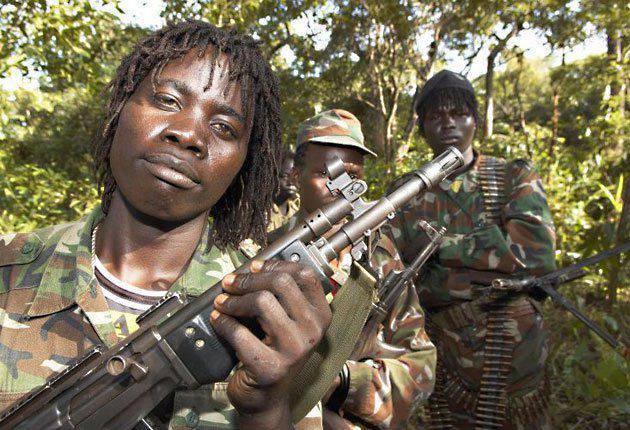
Lord's army arming children
In Uganda, child soldiers are the most active use of the Lord’s army of resistance, or the army of God. This armed formation has been fighting for about thirty years to create a Christian theocratic state in Uganda based on ten biblical commandments. The core of this grouping is made up of representatives of the acholniot nationality living in Northern Uganda and South Sudan and numbering at least 1 200 000 people. Acholi, who migrated to Uganda from the territory of the Sudanese province of Bahr al-Ghazal, are considered a rather militant ethnic group. In fact, the ideology of the Lord’s army of resistance is based on the nationalism of Acholi, caused by the longstanding rivalry between the Nilot tribes and the Bantu peoples, which constitute the bulk of the population in the central and southern regions of Uganda. During the period of British colonization of Uganda, the Bantu, who were engaged in farming, cooperated more closely with the British, while the Nilot tribes of the north, including the Acholi, continued to engage in cattle breeding and hunting and were in a less favorable economic and social position. After the proclamation of the country's independence, the opposition of the Bantu and Acholi aggravated, which led to the emergence among the Acholi of nationalist sentiments, manifested in the form of creating quasi-religious armed formations. In the second half of the 1980's. Acholi began mass demonstrations in the framework of the Movement of the Holy Spirit, which did not yet have the character of a partisan war.
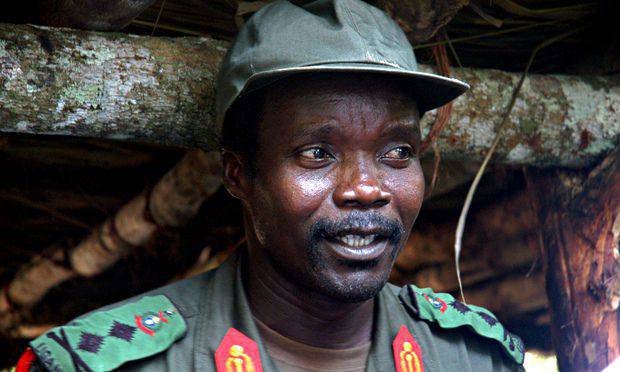
Despite the ostentatious Christianity, in fact, the Lord’s army of resistance is one of the most brutal rebel groups in the African continent. It was created in 1987 by Mr. Joseph Kony (born 1961) - the son of a schoolteacher and, concurrently, the Catholic preacher of the Acholi, Louis Obole. Koni dropped out of school as a teenager, then for some time was a student of the village medical assistant, and later created his own armed group. Joseph Kony proclaimed himself a prophet and the voice of the Holy Spirit, while at the same time assigning to himself the title of Major General. The original armed unit created by Kony was called the Ugandan People’s Democratic Christian Army, then renamed the Uganda Christian Democratic Army and, finally, the Lord’s army of resistance. The ideological foundation of Kony’s organization was a mixture of Christianity with local African cults, in particular with the cult of Ellis Lakwen, a Ugandan healer and sorceress who considered herself obsessed with the spirit of Lakvena (the local spirit, also revered as an associate of the Christian Holy Spirit, is such an odd cocktail of elements of various religions ). Joseph Kony was renowned for being the father of at least 166 children and the husband of 88 wives, while claiming himself a Christian believer.
For more than two decades of its existence, the Lord’s army of resistance has spread its activity to the territory of not only Uganda, but also the Democratic Republic of the Congo and South Sudan. In these neighboring states, military bases and training camps of the rebel army were established. For a long time, the Government of the Sudan provided financial, military, and organizational assistance to the Lord’s army, which thus avenged the Ugandan leadership for supporting the rebels operating in the South of Sudan against the central authorities.
The main part (up to 70%) of the soldiers of the Lord’s army of resistance consists of children and teenagers, many of whom are no more than 8-10 years old. The use of children as military personnel is well within the framework of the organization’s doctrine, in accordance with which a truly Christian society can only be built from children - sinless, not subject to the temptations of the consumer society. Children are recruited, or rather captured during raids in remote forest villages. During the attacks on the villages, the soldiers of the Lord’s army of resistance are rampant, often the adult population is cut out, and children are forcibly taken into their troops, and girls are turned into sexual slavery, and the boys are forced to take up arms and turned into little soldiers. Militants of the Lord’s army destroy all members of other Christian denominations, especially priests and other clergymen, since they consider only their own teaching to be genuine Christianity.
According to international organizations, during the Lord’s activities, the resistance army abducted approximately 24 000 children and 28 000 adults. Abducted women were most often used as sexual and domestic servants, making up a third of all abducted. The average age of those abducted in 1994 was 13 years, but gradually the abductees grew older and in 2004, the average age of those abducted reached 17-18 years. The United States of America regards the Lord’s army of resistance as a terrorist organization and in 2011 sent 100 troops to Uganda who were to assist the Ugandan government army in the fight against the Lord’s army of resistance. As a result of the efforts made by government troops and the police, most of the armed forces of the Lord’s army of resistance in the second half of the 2000s. was forced into South Sudan and the Congo, but up to the present, this armed group is considered to be active and, despite the decline in the number of fighters, continues to pose a significant danger.
Somalia: child soldiers against militant children
Another African country, according to the UN, is the leader in the list of countries in whose territory most of the children are soldiers, this is Somalia. For more than twenty years, the unhappy state has been torn apart by incessant civil war between representatives of various Somali clans and religious fundamentalists. In Somalia, children and adolescents are actively involved in the armed forces of the fundamentalist group Al-Shabab, whose name, translated from Arabic, means “Youth” “Al-Shabab” is in fact a Somali offshoot of al-Qaida and is fighting for the establishment of an Islamic Shariah state in Somalia. It was this organization in the spring of 2015 that committed a monstrous terrorist act in Kenya, the victims of which were students of a local university. In the ranks of the Al-Shabab movement, underage fighters make up about 80% of personnel. Adolescents are much more compliant to ideological influence and more daring during armed operations, which causes field commanders to recruit minors in the ranks of their organization. Recruited adolescents take combat training courses, after which they participate in combat sorties of the group and even in terrorist acts. Some adolescents leave to study at fundamentalist training centers located in Saudi Arabia and Yemen.
On the other hand, according to the head of the Somali Human Rights Protection Center, Ali Sheikh Yassin, and in government forces fighting against al-Shabab on the side of the central government, up to 20% of soldiers are minors. The top officers of the Somali government troops admit that in the conditions of mass shortage of servicemen, they are dear to every person who is capable of holding weapons in their hands, so the recruiters pay attention to minors. As part of the government forces, 15-year-old and even 12-year-old Somali boys serve to guard the roadblocks, patrol the streets of settlements and enter into armed clashes with insurgents. They receive food and even a small allowance for their service. Although war is not a child's occupation, but in the face of a starving and impoverished African country, serving in government troops for these children is a good way out of the situation of eternal poverty in poverty. Therefore, the majority of adolescent soldiers do not complain about their share and conscientiously serve on a par with senior co-workers.
Meanwhile, special UN commissions draw attention to the fact that the Somali government violates international rules by calling minors under 15 for military service. In 2010, there was even a scandal over the suspicions of participation of instructors from the Bundeswehr of the Federal Republic of Germany in the training of young soldiers of Somali government troops. However, international organizations cannot do anything with the use of minors in the Somali government forces. Moreover, if the Somali government abandons the practice of recruiting minors for military service, there will simply be no one to fight against the armed formations of fundamentalists. It is known that the United States of America, which provides financial assistance to the Somali government, is likely to have been sponsored by armed groups consisting of teenagers. Human rights activists emphasize that only Somalia and the United States of America have not signed the international convention on the rights of the child, according to which children and adolescents under the age of fifteen are prohibited from participating in armed conflicts. Since adolescents do not serve in the American army, it is obvious that by refusing to sign a convention, American politicians were primarily guided by considerations of US military-political interests in the third world countries, including those on the African continent - in Somalia and some other countries .
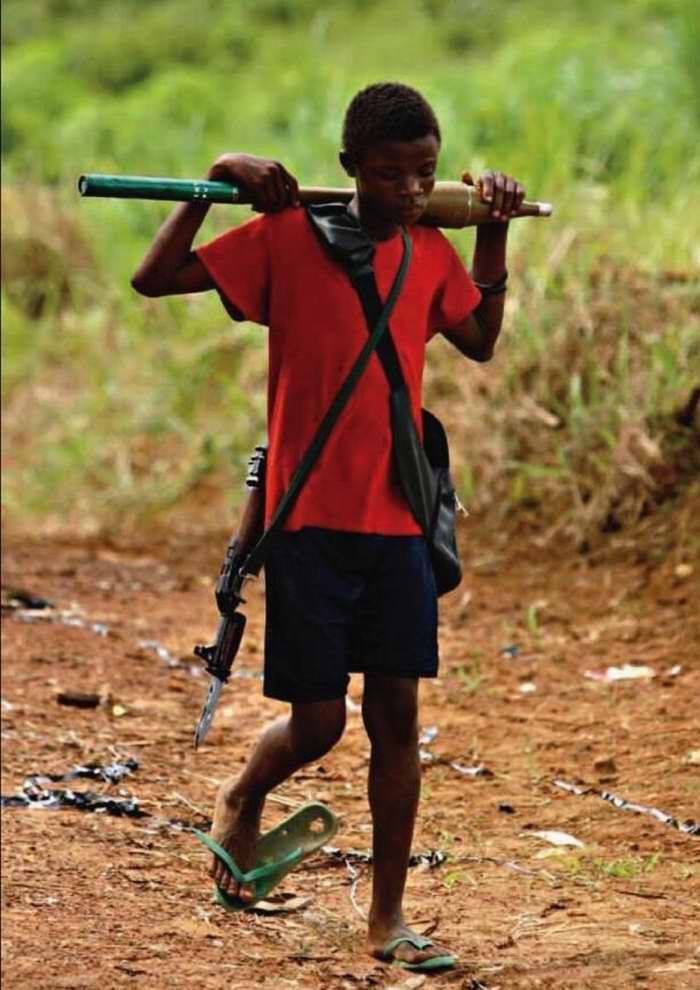
Drug addiction and a broken mind
Ishmael Bieh, a native of Sierra Leone, recently published the book “The Long Way: Memories of a Boy Soldier,” in which he told how he, a thirteen-year-old teenager, had to participate in a civil war, be a witness and participant in murders of people, including in cruel ways. Despite the fact that international organizations specializing in the rehabilitation of former soldiers recruited by rebel armies in childhood are currently working in Sierra Leone, the social adaptation of people whose childhood was taken away from the civil war is not easy. Ishmael Beeh says that “someone settled well, some did not. Now the war is over. But heaps of young people still roam around Freetown. They can't do anything with them. They are useless. The corruption that gave rise to the war has not disappeared anywhere. These guys can be educated, but it is meaningless. When they leave school, he will not be able to find a job. They have nowhere to go at all ”(quoted in: Vaikh D. Caution, children // Trans. M. Kazinika, M. Lipkovich // http://esquire.ru/). By the way, the author of the book did not serve in the rebel formations, but in the government forces of Sierra Leone. At the age of thirteen, he himself went to war in order to take revenge on the insurgents of the rebel army for the relatives they had killed. Many of the fighters of the government forces, including children and adolescents, were guided by the same considerations when they were sent, voluntarily or under the influence of recruiters, to participate in the civil war.
In Sierra Leone, children and adolescents constituted a significant part of the armed units of the Revolutionary United Front under the command of Foday Sank. This field commander borrowed the experience of using children as soldiers from his ally Charles Taylor, the famous dictator of Liberia, who unleashed a bloody civil war in the country. Taylor provided Sank with material and military assistance, thanks to which the Revolutionary United Front managed to significantly increase its numbers and take control of large territories. In fact, Fodey Sanca and his associates sought only to establish control over the diamond mining areas, but to legitimize their actions they actively used populist phraseology, calling on the country's population to establish social justice. Nevertheless, the front became famous not so much by social transformations, as by the cruelty of its militants. Thus, during the capture of Freetown - the capital of Sierra Leone, the militants of the front, a significant part of whom were minors, cut out about 8 000 residents of the capital. About 11 thousands of children fought in the front units, mostly between the ages of 7 and 12. Children were used to protect the diamond mines, warehouses with weapons and food, as well as punitive raids into villages and cities.
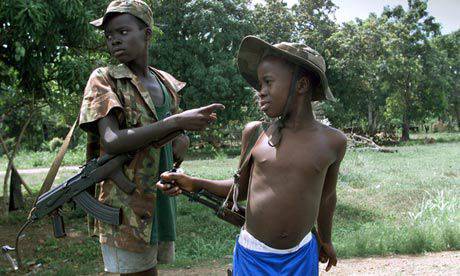 A serious problem, which is inextricably linked with the use of children as soldiers, is the "inculcation" of young drug fighters. Using drugs is much easier to manage armed children, while destroying their psyche. And in Sierra Leone, and in other African, Asian and Latin American countries, rebel group commanders specifically distributed drugs to children and adolescents in armed groups to train them and turn them into even more obedient executors of their orders. Ishmael Bih recalls that he and his colleagues used “Brown-Brown”: “This is a very, very bad drug. I do not recommend to anyone. By and large, this is just cocaine with gun powder. I do not know who invented this hellish thing, but it turned the brain inside out. This thing is much stronger than simple coconut. And it is used much more often. And the more often you use it, the more you need the next time ”(Vaikh D. Carefully, children // Trans. M. Kazinik, M. Lipkovich // http://esquire.ru/).
A serious problem, which is inextricably linked with the use of children as soldiers, is the "inculcation" of young drug fighters. Using drugs is much easier to manage armed children, while destroying their psyche. And in Sierra Leone, and in other African, Asian and Latin American countries, rebel group commanders specifically distributed drugs to children and adolescents in armed groups to train them and turn them into even more obedient executors of their orders. Ishmael Bih recalls that he and his colleagues used “Brown-Brown”: “This is a very, very bad drug. I do not recommend to anyone. By and large, this is just cocaine with gun powder. I do not know who invented this hellish thing, but it turned the brain inside out. This thing is much stronger than simple coconut. And it is used much more often. And the more often you use it, the more you need the next time ”(Vaikh D. Carefully, children // Trans. M. Kazinik, M. Lipkovich // http://esquire.ru/). In neighboring Liberia, whose dictator Charles Taylor was actively recruiting children and adolescents during the civil war, the number of underage warriors quickly exceeded ten thousand. Most of the child soldiers took up arms at the age of 8-10. Almost immediately they got hooked on drugs, but also without drugs their psyche was disturbed as a result of daily participation not only in hostilities, but also in acts of looting, violence, robbery and brutal murders, including the civilian population. Later, when Charles Taylor appeared before the International Tribunal in The Hague, the involvement of children in armed conflict was among the counts of the prosecution. However, punishment is a punishment, and it is not possible to completely eliminate the use of children and adolescents as soldiers in Liberia, Sierra Leone or other African countries. Serious difficulties are caused, as we have already emphasized above, and the rehabilitation of former young soldiers to the conditions of life in peacetime. Most of them are people with a tainted psyche, drug addicted, HIV-infected. However, UNICEF-controlled rehabilitation centers bring some benefit. For example, in Liberia alone, at least 5 800 people passed through rehabilitation centers, who in childhood turned out to be by rebel fighters or government soldiers.
Child soldiers in the Indochina wars
In Asia, child soldiers are most actively used in its southeastern part. Here, in Indochina, in the Malay Archipelago and the Philippines, children and adolescents are also often abducted or recruited by rebel groups. The practice of attracting children to military service back in the 1950-1960-s. discovered the Khmer Rouge - members of the Communist Party of Cambodia under the leadership of the legendary Pol Pot. The partisan poloptovtsev formations consisted largely of adolescents, since the latter were considered the least spoiled "bourgeois propaganda" part of the population. Moreover, as in Africa, children from the poorest peasant families, especially from the backward mountain areas, had no other choice than to join the Khmer Rouge partisan detachments. In that short period of Cambodian storieswhen the Khmer Rouge were in power in the country, children and adolescents served in the regular units of the armed forces of Democratic Kampuchea. After the overthrow of the Polpotov regime and the retreat of the Khmer Rouge into the jungle, the practice of kidnapping children and adolescents by insurgents and their use as militants, scouts and saboteurs of the Khmer Rouge armed groups again resumed.
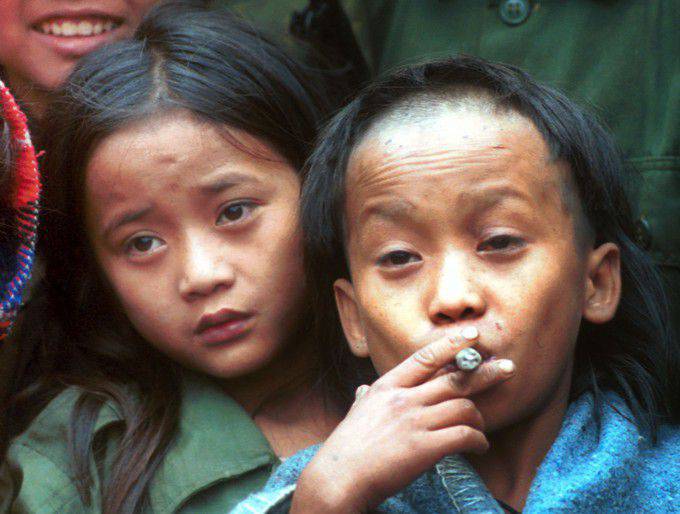
In Myanmar (Burma), as in Uganda, in 1997-2001. acted its own "Army of God." This rebel group, as the name implies, also formally focused on Christianity as the only ideology that did not prevent the militants from carrying out terrorist attacks against targets in Myanmar and Thailand. The army of God was one of the separatist groups of the Karen - a people living on the border of Myanmar and Thailand and fighting for a long time for political independence and creating their own state. There have always been many Christians among the Karen who were baptized under the influence of British missionaries. Karen Christians were born and twin brothers Johnny and Luther Hthu.
In the 1997 year, at the time of the creation of the Army of God, its founders, the Khtu brothers, were nine years old. During a punitive operation, the army unit of the Myanmar Armed Forces made a sweep of the brothers' native village. When the adults fled the village, the Htu brothers managed to gather a militia detachment and defeat the army unit. After that, several hundred Karen separatists rallied around the Khtu brothers, mostly teenagers and young men aged 10-20. The most famous outing of the Army of God was the seizure in January 2000 of the hospital in the city of Ratchaburi, in Thailand. Ten armed children seized the hospital, demanding that they be transported to the Khtu brothers in Myanmar, but during the operation to free the hospital, they were all destroyed by Thai special forces. However, when the Myanmar army inflicted a significant defeat on the Army of God, in 2001, the Thai government provided political asylum to the Khtu brothers. Luther and Johnny Htu, despite his amazing biography, are still alive. Johnny resides in Thailand, and Luther visits his brother, but prefers to live in Sweden - there he received a liberal education in one of the local universities, married a Karen girl, but later divorced and, according to 2013, worked in a local home for the elderly. In 2015, the Brothers Htu is performed in 28 years.
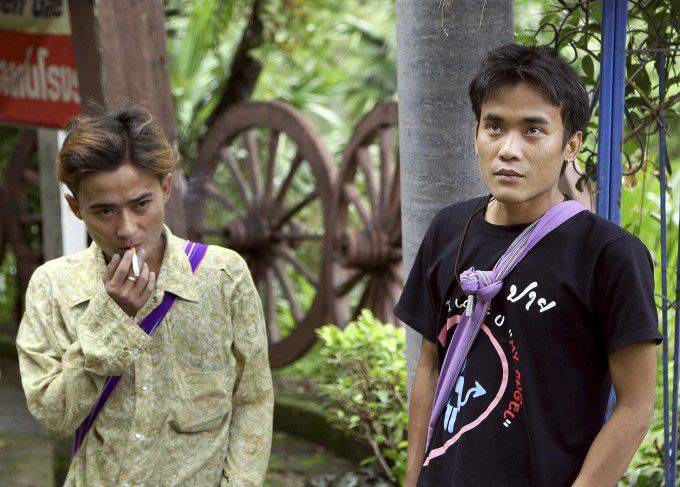
Myanmar is one of the most closed states of Southeast Asia, and of the world as a whole. Since the sixties of the twentieth century, a nationalist military regime has ruled here, which seeks to prevent the penetration of “corrupting Western tendencies” into the country and continues the armed struggle against the rebels, whose roots go back to the Second World War. The rebel formations operate in the north and east of the country and are divided into separatist groups of national minorities and the armed forces of the Maoist Communist Party of Burma. Both of these and other rebel groups are closely linked to the drug business, since the famous Golden Triangle enters the territory of Myanmar. It is noteworthy that not only the rebel groups of the national minorities of Myanmar, but also government forces are actively using child soldiers. The process of removing children from military service in Myanmar began only in 2014, under the influence of the United Nations. At the grand parade in Yangon - the capital of the country - 109 children were officially fired from military service. However, many researchers and journalists believe that this is just a sham in order to make an impression on the world community. In fact, neither the Myanmar leadership, nor, the more so, the warlords of the rebel groups, will never go to full demobilization of soldiers recruited from among children and teenagers. Young soldiers and militants are recruited, first of all, in the poorest peasant families and many of the poor children do not mind going into army or insurgent detachment, as this gives a certain status of "man with a gun", and daily guaranteed food, and even no cash
Children's gerilla in the Peruvian mountains and the Colombian jungle
On the territory of Latin America, children are actively using the revolutionary Marxist-Leninist rebel organizations. In particular, it is child soldiers that make up a significant part of the militants of the Senudero Luminoso Peruvian Maoist movement leading the armed partisan struggle in the Andes. After the Maoist organization lost the sympathy of a large part of the peasant population of Peru, revolutionaries only had to rely on children and adolescents, due to youthful maximalism and despair of volunteers joining guerrilla groups. As part of the "Sendero Luminoso" operates the so-called "Children's Battalion", almost entirely consisting of children and adolescents from the ages of 11 years, called up in areas controlled by Maoist rebels. At one time, children and insurgents from the Revolutionary Movement Tupac Amaru were actively used - the second most important revolutionary Marxist-Leninist group operating in Peru and famous for its seizure of the embassy.
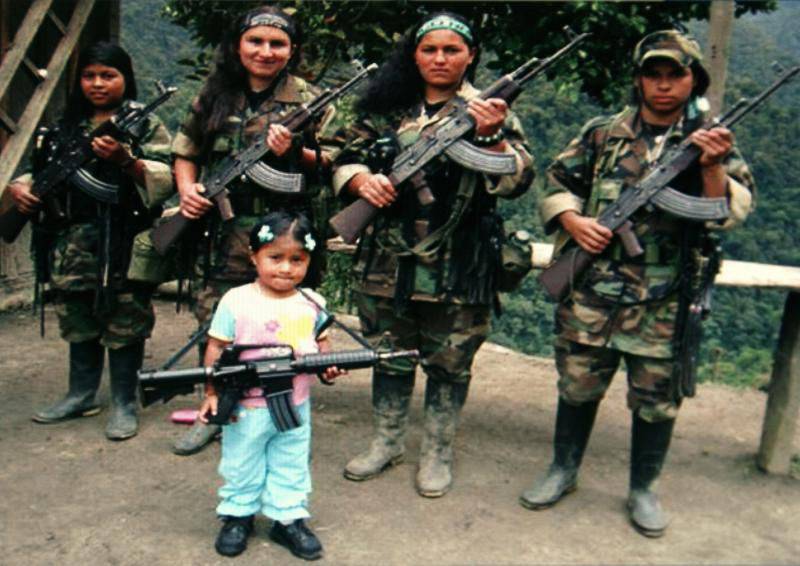
An even greater number of children and adolescents are fighting in the ranks of partisan groups in Colombia. The largest armed organization operating in the Colombian jungle and accused by the United States of terrorism and drug trafficking are the Revolutionary Armed Forces of Colombia - Army of the People (FARC-AN) - a Marxist-Leninist organization, focused on the Cuban revolutionary experience. By the way, the leaders of Cuba and Venezuela believe that the FARC-AN is not a terrorist organization, but a military-political organization fighting with the pro-American government of Colombia. According to the head of the United Nations Children's Fund in Colombia, in the partisan units operating in the country, up to 15 thousands of children and teenagers fight. Most of the Colombian young rebels are part of the divisions of the FARC-AN, but there are children and adolescents in other rebel groups. Most of the militants of the FARC-AN did not reach the 18 age, as in the territories controlled by the rebels, there is an order to recruit boys and girls over the age of 13. Since the FARC-AN controls about half of the country's territory, the conscription force of the rebels is quite numerous. Thousands of children and adolescents of Colombia and even children from neighboring Ecuador and Venezuela passed through the service in the rebel detachments - there the peasant Indian families themselves are not averse to giving boys and girls to rebel detachments from neighboring Colombia. In 2007, a special commission was organized in Colombia to counteract the recruitment of children into illegal armed groups. However, of course, human rights activists are not able to completely stop the recruitment of children into the armed opposition groups, although some of the former rebels are returning to normal life due to the activities of rehabilitation centers and again become peaceful people.
It should be noted that in a number of Latin American countries, in fact, and government forces may use minors as soldiers. So, underage soldiers are found in Paraguay, Ecuador, Peru and in the same Colombia. But the bulk of the children - soldiers in Latin America are represented by militants of the revolutionary partisan formations. It is indicative that adolescents currently serve practically on official grounds in the armies of a number of states. So, in Uganda, the minimum age for recruits or volunteers is 13 years - this country violates the UN international convention. In Laos and Iraq, military service can be enrolled in 15 years, and 16-year-old young men and women are ready to open the doors of the barracks of the armed forces not only Bangladesh, Bhutan, India, Cuba, Mexico, Namibia, Pakistan, Peru, Rwanda, El Salvador, Sudan and Chile, but also even Great Britain and Belgium. Moreover, in the UK, thirteen-year-olds of both sexes are admitted to military schools, which is explained by the military leadership of the country as a result of the lack of eighteen-year-old applicants from military universities. In Australia, Austria, Brazil, Indonesia, Nicaragua, Yugoslavia and Angola, you can join the military in 17 years, a seventeen-year-old can be accepted into the US Army. As for the rebel groups, they are ready to accept any minors capable of carrying weapons. Fighters who have not turned 18 years, enough in the armed groups operating in Syria, Iraq, Lebanon, Yemen, Afghanistan, Turkey, in the ranks of terrorist organizations in the North Caucasus and the Balkans.
Of course, the violent abduction of children with the aim of recruiting them into armed groups, whether they are government forces or insurgent groups, causes a negative public reaction. However, there are also situations where children have no choice but to take up arms, including in the case of the occupation of the native country by foreigners. Thus, during the Great Patriotic War, more than 35 thousands of pioneers were awarded with various orders and medals for their heroic participation in the struggle against the German fascist invaders. They, too, were children, but stood to death for their homeland.
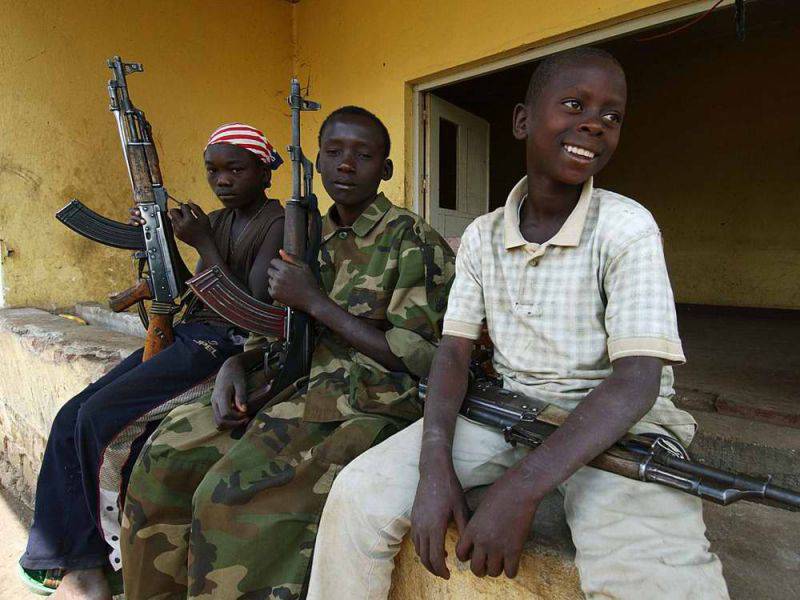
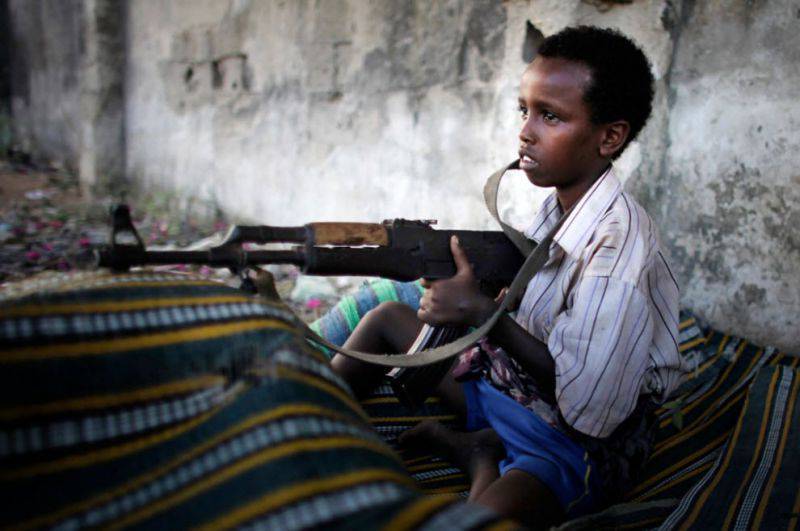
Information